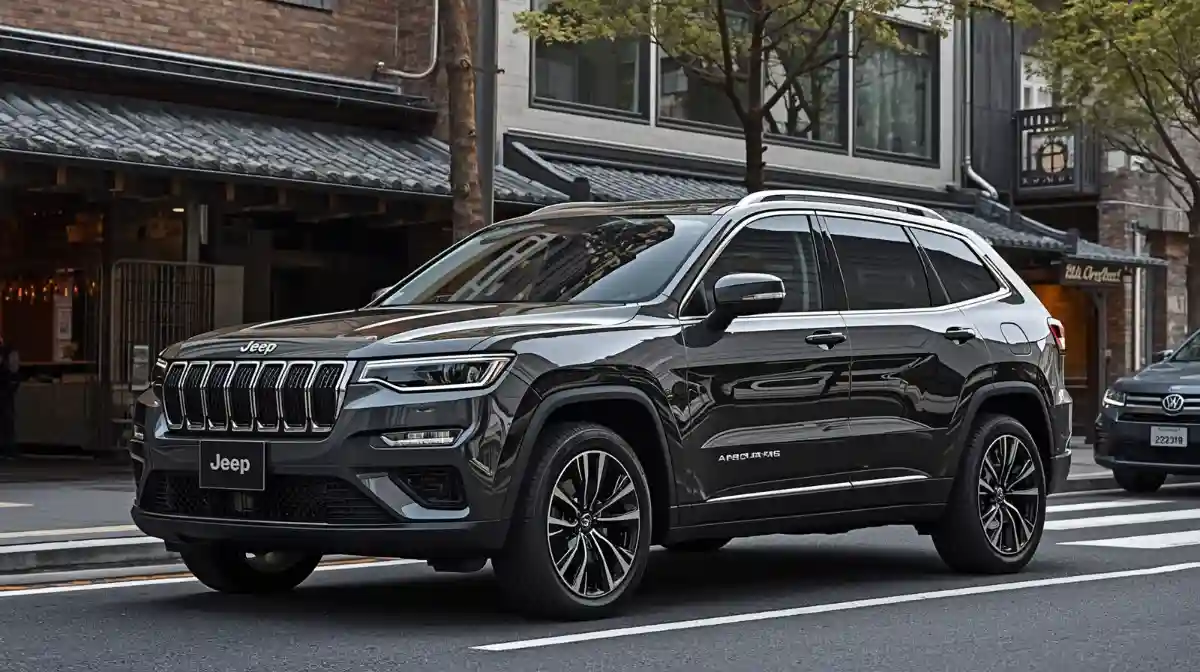Game-Changer in SUVs: Jeep’s New 9-Seater Debuts in Japan—Find Out Why Families Are Excited

Jeep Ups the Game with a 9-Seater Debut in Japan
Jeep has officially introduced its brand-new 9-seater SUV to the Japanese marketplace, marking a strategic expansion into a country known for favoring compact vehicles. This move highlights Jeep’s intent to target family and group travel preferences, especially as Japanese consumers increasingly seek alternatives that blend spaciousness, safety, and modern comfort. Ditching their typical focus on tight urban dimensions, Japanese buyers now have the option to explore rugged capacity with Mopar’s legendary durability. This surprise release signals confidence in offering a large, premium SUV in a market where minivans and 7-seaters like the Toyota Alphard, Honda Odyssey, and Nissan Serena have thrived. Toyota’s iconic “boxy luxury” segment meets its match as Jeep brings bold American styling, off-road capability, and advanced features—now accessible to Japanese families looking for adventure and adaptability in one vehicle. Could this be the model that reshapes mid-size family transportation in Japan?
Spacious Interior Meets Premium Comfort and Smart Design
Inside the new Jeep 9-seater, functionality and luxury converge in ways rarely seen in a family SUV. The vehicle likely uses a clever 3-3-3 seating layout, offering real-world usability across three full rows. People in the third row will no longer feel cramped, thanks to thoughtfully engineered space enhancements. Expect to find premium materials—lexical details such as leatherette or high-grade fabric, soft-touch dashboard finishes, and ambient lighting that elevates the journey’s mood. Each row may include dedicated air vents and USB-C ports, ensuring that smart gadgets stay powered on long trips. Touchscreen infotainment systems, possibly featuring off-road navigation and smartphone integration, add modern flair without overcomplicating the cabin. Rear-seat convenience, such as sliding or folding second-row seats, offers versatility for carrying large items or embarking on long trips. Overall, this interior redefines mainstream SUVs as comfortable family companions, not just vehicles.
Performance You Can Rely On, Wherever the Road Goes
The Japanese version of the 9-seater Jeep appears engineered to offer more than just seating capacity; it’s about performance and reliability. Likely equipped with a choice between a refined petrol or diesel engine, Jeep ensures this large MPV delivers smooth power even when fully occupied. Combining a fuel-efficient powertrain with advanced transmissions and selective all-wheel drive, the vehicle maintains stability in city traffic and comfort on long highway drives—essential for Japanese road conditions and occasional snow. Robust safety features would include a reinforced body structure, multiple airbags, advanced driver assistance systems like lane-keep assist and adaptive cruise control, and traction control for slippery surfaces. The ride is expected to feel grounded and composed, reminiscent of Jeep’s off-road performance DNA, while acting responsibly for everyday driving. This means delivering capacity and comfort without compromising performance or safety.
Why Launching in Japan Signals Big Ambition
Choosing Japan as the launch market for the 9-seater Jeep is not just strategic—it conveys ambition. Japanese consumers value reliability, safety, and brand stature—qualities Jeep brings with a distinctive twist of adventure-focused branding. The country’s strong after-sales networks and appreciation for quality craftsmanship mean that this model must meet high expectations. Success in Japan could encourage wider regional exports in East Asia, pushing Indian-made SUVs to front-line positions in global markets. For Jeep, this is an entrance into a realm where fewer American SUV models have historically succeeded. If the public response is positive, especially against local favorites, it opens doors to expand beyond typical family vehicles and into shared travel fleets or corporate transport niches. This launch thus serves as much more than product introduction—it’s a bold statement in global SUV trends.
What It Means for the Auto Market at Large
Jeep’s 9-seater arrival in Japan may also influence broader industry dynamics. Indian auto giants like Tata, Mahindra, and Maruti Suzuki—already exploring exports of large MPVs—could accelerate efforts to step up quality, features, and drives. Indian-made electric SUVs may soon follow suit, reaching new markets with confidence. Globally, consumer mobility is shifting toward versatile, technology-rich, yet value-oriented vehicles designed for both city and escape routes. With its heritage of durability and adventure, Jeep aligns perfectly with these evolving preferences, offering stiff competition to luxury minivans or outdated MPVs. If successful, the Japanese launch could herald a new era for mainstream SUVs—popular, spacious, and capable across continents.